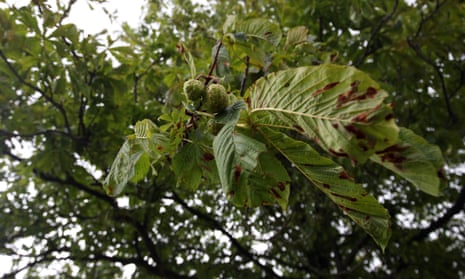Trees are looking lush this summer, but appearances can be deceptive. Britain’s trees are being ravaged by a myriad of pests and diseases that could change the landscape out of all recognition.
Many horse chestnut leaves are now turning brown, due to a leaf miner, the larva of a moth which burrows through the leaf. Even more serious is a canker bacteria disease that causes bleeding on the trunk of horse chestnuts, often killing younger trees within a few years. The disease is spreading rapidly through the UK.
Ash dieback (Chalara) is a more recent infection, first found in the UK at a tree nursery in 2012 and caused by a fungus that quickly kills young ash trees and older trees more slowly. The fungal spores spread so easily it could eventually wipe out the UK’s estimated 80m ashs, one of our commonest trees.
And there is an alarming host of other plagues to contend with – Asian longhorn beetles and oak processionary moth, chronic oak decline, Massaria fungal disease of plane trees, Phytophthora ramorum in larch, as well as sweet chestnut blight and more besides.
Trees can be taken for granted quite often, but the past gives a glimpse of what can befall us if they succumb to infection. Elms, grand and tall, once dominated much of the British countryside but about 40 years ago Dutch elm disease devastated millions of these trees, and the landscape has still not recovered from that epidemic.
All these pests and diseases are foreign imports often brought in on ornamental and commercial trees, along with the soil they grow in. Infection controls for these imported plants are far too slack.

Comments (…)
Sign in or create your Guardian account to join the discussion